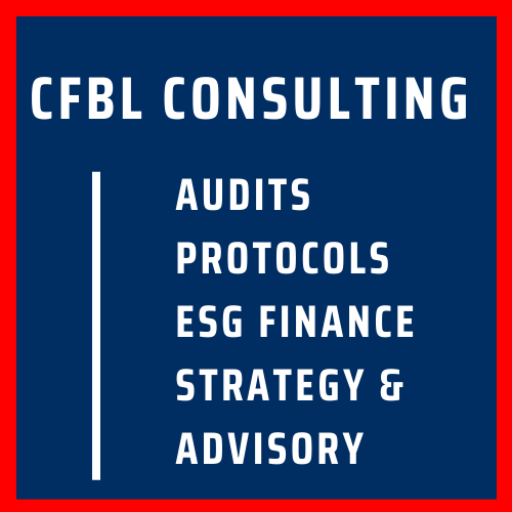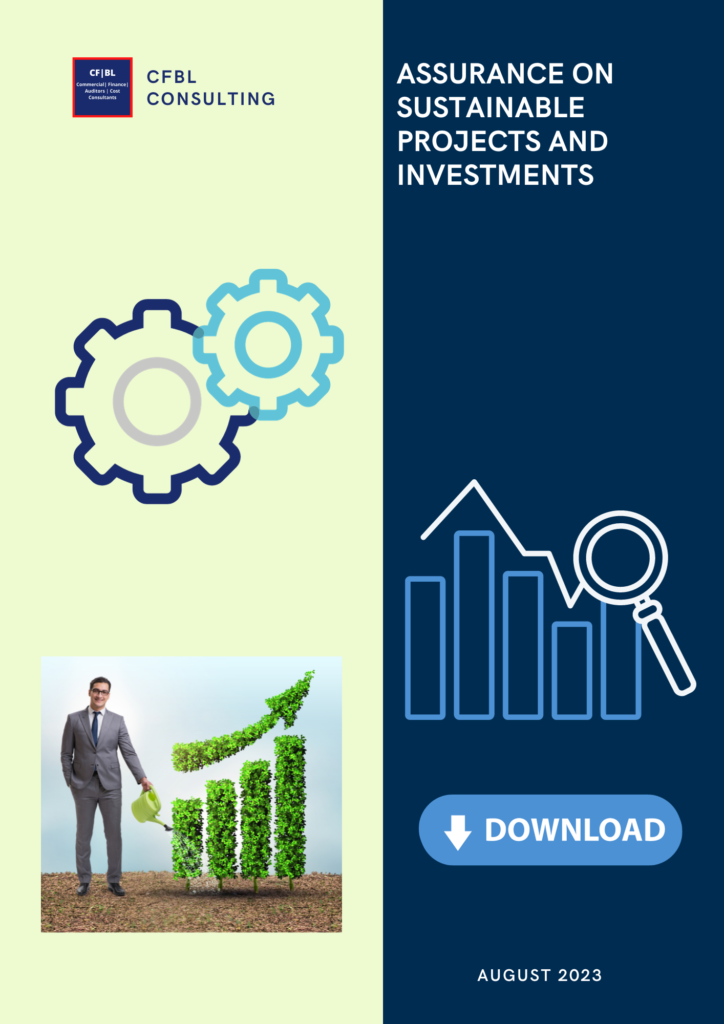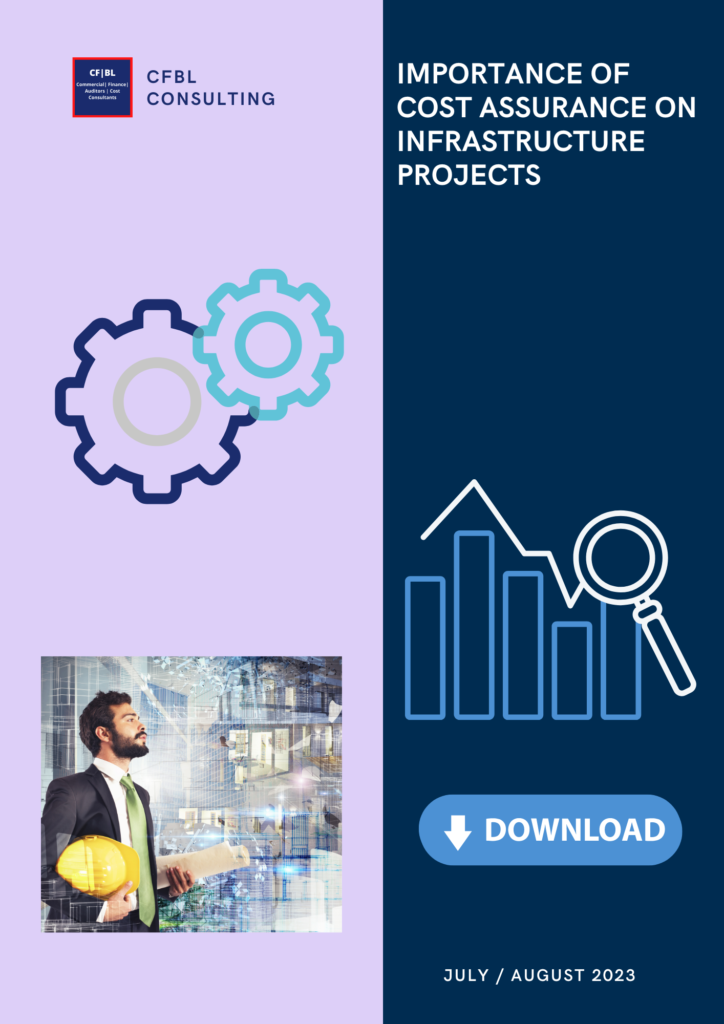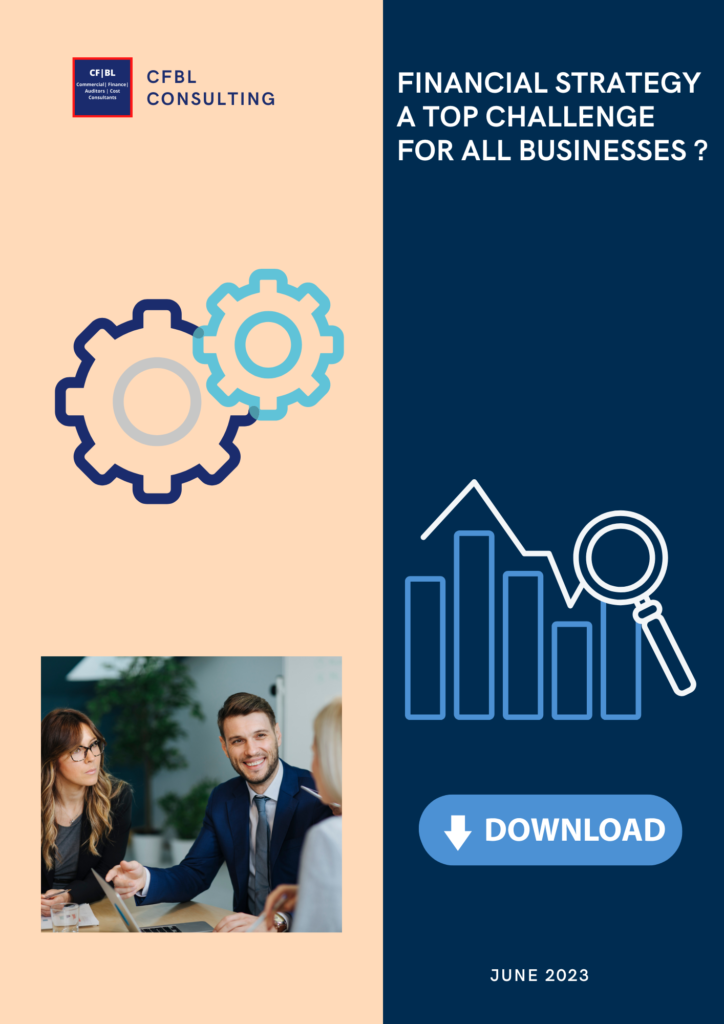
Cecelia Fadipe (FMCA) – CFBL
Understanding the Cost of Living and Inflation in the UK
The United Kingdom is currently grappling with a confluence of economic challenges, prominently the surging cost of living and inflation rates. This section provides an overview of the prevailing economic conditions and their implications for businesses and consumers.

Overview
The current economic landscape in the United Kingdom is marked by unprecedented challenges, particularly the soaring cost of living and inflationary pressures. This investigates the dynamic interplay of these factors and proposes strategies for businesses to adapt and thrive in the face of such adversities.
Introduction
- By drawing on the UK economy as a case study, we explore the implications, challenges, and opportunities for organizations aiming to cultivate agility and resilience in their operations.
- In an era of unprecedented uncertainty, the ability of businesses to adapt swiftly and withstand economic shocks is crucial for sustaining operations and contributing to broader economic stability. This section discusses the imperative for businesses to develop agile and resilient strategies.
- According to an Office for National Statistics (ONS) survey from November 2023, 52% of adults in Great Britain reported an increase in their cost of living compared to the previous month. In November 2023, the OBR forecasted that real household disposable incomes per head will increase by 0.3% in 2023, fall by 1.5% in 2024, and then increase by an average of 1.5% between 2025 and 2028. Low-income households are most affected by rising prices.
- In November 2023, nearly half of the households in Great Britain, specifically 47 per cent, indicated experiencing a rise in their cost of living in the preceding month. This marks a slight decrease from the preceding month when 49 percent of households reported increased living costs. Multiple factors have contributed to the escalation of prices in Britain (Statista,2023).
Economic Trends’ Influence on Business Strategy
According to a McKinsey Global Survey, around 80% of executives say their companies have launched digital transformations or are currently in the process of doing so. This statistic highlights the urgency felt by businesses to adapt and innovate.

Key Insights into the Economic Landscapes and Its impact on Business Strategies
Inflation Rates
- Hypothetically, if inflation rates have been rising in the UK, it could indicate increased pressure on the cost of living for households. High inflation may lead to a decrease in the purchasing power of the currency, impacting consumers’ ability to afford goods and services. Policymakers might respond by adjusting interest rates or implementing other monetary measures to control inflation.
Consumer Price Index
- A rising CPI suggests that the average prices of goods and services consumed by households are increasing. For example, if the CPI indicates a surge in the prices of essential items like food and housing, it could contribute to the reported increase in the cost of living for households in Great Britain.
Wage Growth
- Analyzing wage growth in conjunction with inflation is essential.If wage growth has not kept pace with inflation, it could mean that real wages are declining, affecting the standard of living for workers. Conversely, robust wage growth might indicate a healthier job market and increased consumer spending capacity.
Economic Indicators
- Analysis of key economic indicators, such as inflation rates, consumer price index, and wage growth, provides a comprehensive understanding of the economic landscape in the UK.
Global Factors Driving Inflation
- The Consumer Prices Index (CPI), a measure of inflation, was 3.9% in the year ending in November 2023, according to the most recent data from the Office for National Statistics (ONS). This is a two-year low and considerably less than the 4.6% recorded a month earlier.
- Even while this percentage is significantly lower than the 41-year peak of 11.1% seen in the year ending in October 2022, it is still higher than the government’s long-term goal. The persistent legacy of unfavourable economic conditions is the reason why inflation is still above target.
Navigating Economic Dynamics
Global tensions drive up to 60% of inflation fluctuations in the UK. Uncertainties in trade and conflicts disrupt economic activities, causing currency fluctuations and impacting domestic inflation rates significantly

Risk and Business Resilience
- Sustainability investing has the potential to stimulate innovation in addition to serving an important risk management role by mitigating risks to future profit. New commercial opportunities arise when goods and services are redesigned to satisfy growing or emerging consumer requirements or environmental norms.
- With its “Pollution Prevention Pays” programme, for instance, 3M incorporates sustainability into its innovation pipeline by proactively minimising waste and preventing pollution through waste recycling, equipment redesign, process modification, and product reformulation.
- The first workable, environmentally friendly substitute for hydrofluorocarbons is 3M’s Novec fire suppression fluid. A common misconception among corporate executives is that sustainability and profits are mutually exclusive. This is most likely a hangover from the 1970s and 80s when high-priced, low-quality environmental products failed to find a market and early socially conscious investing produced poor returns.
Investors and Shareholders
- Milton Friedman’s influential 50 years old, shareholder theory that the sole purpose of a business is profit is also likely the source of this. This prevailing wisdom has now changed. Today businesses are experiencing benefits in addition to financial gains resulting from enhanced competitive advantage and innovation.
- Businesses are also experiencing noteworthy cost reductions due to operational improvements related to environmental sustainability. Furthermore, investors now monitor company environmental, social, and governance (ESG) for strong performers
- As a result, investors are able to establish a correlation between improved ESG and future financial success. Hence, improving operational efficiency by better managing natural resources like water and electricity and cutting waste can lead to significant cost reductions and some studies state that businesses get an average internal rate of return on low-carbon investments of 27% to 80%.
Internal Factors Impacting Inflation Rates
Understanding and managing these domestic factors are crucial for policymakers and businesses in maintaining stable economic conditions and managing inflationary pressures.

Domestic Factors Driving Inflation
Monetary Policy
- The UK’s inflation is closely tied to the decisions of the Bank of England regarding interest rates and monetary policy. Adjustments in interest rates can influence borrowing costs, spending, and investment, impacting the overall demand and supply in the economy. The central bank’s goal is often to maintain price stability, and its policy decisions play a crucial role in managing inflationary pressures.
Government Expenditure and Taxation Changes
- Fiscal policies, including government spending and taxation, directly impact inflation. An increase in government spending can stimulate economic activity, potentially leading to higher inflation, while taxation changes can influence disposable income and consumer spending. Balancing these factors is essential for policymakers to manage inflation within acceptable levels.
Consumer Demand
- When demand for goods and services surpasses supply, prices tend to rise, causing inflation. Increased consumer spending, often fueled by factors like low-interest rates or improved consumer confidence, can drive up demand.
Labor Market, Property Market, and Supply-side Concerns
- The dynamics of the labour market, property market, and supply-side factors contribute significantly to inflation in the UK. Wage growth, employment levels, and productivity all play roles in determining overall inflationary pressures.
- Additionally, trends in the property market, such as housing prices, can affect consumer wealth and spending patterns. Supply-side concerns, including efficiency, technological advancements, and regulatory policies, influence the cost structure of businesses, impacting the prices of goods and services in the market.
- A holistic understanding of these domestic factors is crucial for formulating effective strategies to control inflation.
Definition and Characteristics of Agile Business
Studies show that companies implementing agile methodologies experienced a 20-30% increase in project success rates compared to traditional models.

Agile business models are dynamic, customer-focused strategies that prioritize adaptability, collaboration, and continuous improvement. By embracing change and feedback, organizations adeptly navigate today’s complex business landscape. This section delves into the concept, highlighting its key traits and the imperative for flexibility and responsiveness.
Iterative and Incremental Development
- Agile business models thrive on iterative and incremental development. Rather than adhering to rigid long-term plans, projects are divided into manageable iterations or sprints. This approach enables continuous feedback, adaptation, and swift responses to evolving market dynamics and customer requirements.
Continuous Improvement
- Agile Business Models promote continuous enhancement. Teams regularly review processes, aiming for greater efficiency and effectiveness. This commitment to adaptability fosters innovation, reduces waste, and ensures ongoing improvement.
Embracing Change
- The Agile Business Model recognizes that change is inevitable. Rather than resisting change, it is embraced as an opportunity for improvement. This mindset allows businesses to pivot quickly in response to new opportunities or challenges, fostering a more resilient and dynamic organizational culture.
Customer-Centric Approach
- Agile Business Models prioritize regular customer interactions throughout development to ensure alignment with expectations. By promptly integrating feedback and emphasizing customer needs, businesses refine offerings to stay competitive.
Cross-Functional Collaboration
- Agile methodologies promote collaboration among diverse teams, fostering better communication, faster decisions, and holistic problem-solving. This approach encourages sharing diverse expertise for improved outcomes.
Adaptive Planning
- Unlike traditional models with fixed plans, Agile embraces adaptable planning. This approach allows organizations to respond effectively to changing circumstances, adjusting strategies based on new information or unexpected challenges.
Agile Response to Market Changes
- The Agile Business Model facilitates quick responses to market trends and tech advancements, ensuring relevance and a competitive edge.
Empowering Teams in Agile Methods
- Agile empowers teams, boosting morale and problem-solving speed. Empowered teams drive innovation, contributing to overall business success.
Resilient Business Strategies
Approximately 75% of businesses that actively adjust their pricing strategies in response to inflation report better resilience and customer retention, according to industry projections.

By incorporating these elements into their overall business strategies, organizations can enhance their resilience and better navigate the complexities of the modern business environment.Building resilience in a business involves developing strategies that enable the organization to withstand and recover from disruptions, uncertainties, and challenges. Here are key elements of resilient business strategies.
Risk Management and Contingency Planning
- Resilient businesses prioritize risk management and comprehensive contingency planning. This involves identifying potential risks, both internal and external, and devising strategies for swift and effective responses to minimize operational disruptions.
Diversification of Revenue Streams
- Depending on a single revenue stream exposes businesses to risks. Resilient strategies include diversifying revenues through new products, markets, or income sources, reducing dependence on any single aspect.
Supply Chain Resilience
- Building supply chain resilience is vital for businesses during global disruptions. This includes mapping vulnerabilities, collaborating with suppliers for contingency plans, and securing alternatives. Resilient businesses use strong logistics and inventory strategies to navigate disruptions effectively.
Technology Integration and Digital Transformation
- Tech adoption and digital transformation bolster business resilience, enhancing efficiency and insights through automation, cloud computing, and data analytics. Digital-ready businesses adapt more readily, meeting evolving customer expectations.Building supply chain resilience is vital for businesses during global disruptions. This includes mapping vulnerabilities, collaborating with suppliers for contingency plans, and securing alternatives. Resilient businesses use strong logistics and inventory strategies to navigate disruptions effectively.
Agile and Adaptive Leadership
Resilient businesses are led by agile decision-makers who encourage continuous learning, embrace feedback, and foster innovation for overall organizational resilience.
Employee Well-being and Engagement
- Resilient businesses prioritize employee well-being and engagement, essential for navigating challenges. This involves support, communication, resources, and fostering a positive work culture.
Financial Prudence and Flexibility
- Maintaining financial health is crucial for business resilience. This includes prudent financial management practices, such as maintaining cash reserves, managing debt responsibly, and regularly reviewing financial strategies. Financial flexibility allows businesses to weather economic downturns and invest in opportunities that arise.
Challenges in Implementing Agile and Resilient Strategies
Approximately 65% of organizations encounter cultural resistance as the primary hurdle when implementing agile and resilient strategies, hampering smooth transitions.

Identifying challenges in implementing agile and resilient strategies is crucial for effective execution. Some common obstacles include:
Cultural Shift
- Shifting from traditional to agile practices may face resistance from established organizational cultures and structures.
Leadership Buy-In
- Without support from top management, implementing these strategies might lack resources or commitment.
Skill Gaps
- Teams might lack necessary skills for agile methodologies or adapting to digital transformations, hindering effective implementation.
Resource Constraints
- Insufficient time, budget, or technological infrastructure can limit the successful execution of these strategies.
Resistance to Change
- Employees accustomed to traditional methods might resist adopting new approaches, affecting the implementation process.
Complexity in Scaling
- Challenges arise when scaling agile practices from small teams to larger organizational units or across multiple departments.
Measurement and Evaluation:
- Determining the effectiveness of agile and resilient strategies might be challenging without clear metrics or evaluation criteria.
Integration Issues:
- Aligning different departments or functions within the organization to work cohesively under agile methodologies can pose integration challenges.
Risk Aversion:
- Some organizations might struggle to embrace the risk-taking aspect of agile strategies due to a preference for stability.
Adaptation to Uncertainty:
- Agile and resilient strategies thrive in dynamic environments; however, adapting these strategies to unpredictable scenarios can be challenging. Recognizing and addressing these challenges is essential for organizations aiming to successfully implement agile and resilient strategies.
Innovations and Emerging Trends that can Further Enhance Agility
By 2025, it’s estimated that over 85% of enterprises will have adopted edge computing to support their digital strategies, improving response times and agility significantly.

In today’s swiftly changing business landscape, driven by tech advancements and emerging trends, organizations must boost agility and resilience to stay competitive and navigate uncertainties effectively.
Artificial Intelligence (AI) and Machine Learning (ML)
- AI and ML integration transforms business operations, automating tasks, predicting trends, and providing actionable insights. Leveraging these technologies enables businesses to make informed decisions, dynamically respond to market changes, and develop adaptive strategies based on real-time data.
Edge Computing
- Edge computing reduces latency and boosts agility by processing data closer to its source, ideal for fast-paced environments. It enables real-time processing for swift decision-making in response to changing conditions.
Blockchain Technology
- Blockchain revolutionizes industries with its secure, decentralized nature. It ensures data integrity, reducing fraud risk, and unauthorized access, enhancing resilience. Its decentralized structure prevents single points of failure, crucial for sustained business continuity.
Internet of Things (IoT)
- IoT devices gather real-time data, optimizing processes and efficiency. They enhance resilience by offering visibility and control to swiftly respond to disruptions and maintain critical system reliability.Blockchain revolutionizes industries with its secure, decentralized nature. It ensures data integrity, reducing fraud risk, and unauthorized access, enhancing resilience. Its decentralized structure prevents single points of failure, crucial for sustained business continuity.
Cloud Computing
- Cloud computing is crucial for business agility, offering scalable resources for quick adaptation. It also supports data backup and recovery, enhancing resilience during disasters or system failures.
Actionable Recommendations
- In the UK, businesses face an unpredictable global economy, urging agility and resilience for sustained success. Implementing strategies for quick adaptation and fortifying against uncertainties is crucial. Here are essential recommendations for businesses to consider.
Conduct a Risk Assessment
- Regular risk assessments are key to resilience. Businesses should analyze supply chain vulnerabilities, economic changes, and regulations for informed decision-making and proactive risk mitigation.
Frequently Asked Questions (FAQs)
In an era of inflation, businesses must swiftly adapt to remain competitive. Strategies emphasizing adaptable pricing, diverse supply chains, and customer-centric approaches are vital. Agility, innovation, and resilience are crucial for navigating this challenging economic landscape.
1. How can businesses adapt their pricing strategies during inflationary periods?
- Answer: Businesses can consider dynamic pricing models that allow for flexible adjustments based on cost fluctuations. This approach helps maintain competitiveness without compromising profitability.
2. What steps can be taken to mitigate the impact of rising supply chain costs?
- Answer: Diversifying suppliers, optimizing logistics, and renegotiating contracts can help manage increased supply chain costs. Seeking alternative sourcing options also reduces dependency on vulnerable supply routes.
3. How does agile decision-making support businesses during inflation?
- Answer: Agile decision-making enables swift responses to market changes, allowing businesses to adjust strategies, pricing, and resource allocations in real-time to mitigate inflationary impacts.
4. What role does innovation play in combating inflationary pressures?
- Answer: Innovation fosters value creation and differentiation. Businesses innovating in product offerings or processes can offset rising costs, maintaining competitiveness.
5. How crucial is customer-centricity during inflationary periods?
- Answer: Understanding changing customer needs is pivotal. Businesses that tailor offerings and services effectively to evolving customer preferences can maintain loyalty and mitigate the impact of inflation on consumer spending.
6. What financial strategies can businesses employ to navigate inflation?
- Answer: Smart financial planning involves managing cash flows efficiently, diversifying investments, and exploring hedging options to safeguard against inflation’s financial impacts.
7. Why is resilience important in inflationary times, and how can it be fostered?
- Answer: Resilience ensures adaptability. Businesses resilient to inflationary pressures focus on diversification, optimization, and continuous improvement across operations, enabling them to weather uncertainties effectively.
8. How does inflation impact business operations beyond pricing?
- Answer: Inflation affects various aspects, such as increased raw material costs, higher wages, and potential decreases in consumer purchasing power. It also impacts borrowing costs and overall economic stability.
9. Can businesses employ long-term strategies to combat inflation’s effects?
- Answer: Yes, adopting innovation-driven strategies, investing in efficiency improvements, and creating sustainable practices can mitigate inflation’s long-term impact.
10. How do global economic conditions affect inflation and business strategies?
- Answer: Global economic conditions, like currency fluctuations and trade dynamics, influence inflation rates and subsequently impact businesses. Adopting diversified approaches and adapting to global changes is essential.
11. How can businesses protect themselves from potential inflationary risks?
- Answer: Risk assessment and scenario planning are crucial. Businesses should regularly evaluate potential inflationary risks, enabling them to develop proactive strategies to mitigate adverse effects.
12. What steps can small businesses take to cope with inflation?
- Answer: Small businesses can focus on cost-effective measures like optimizing operations, renegotiating contracts, and exploring alternative suppliers. Strengthening customer relationships and adapting quickly to market changes is also essential.
13. How does inflation impact consumer behavior, and how can businesses adapt?
- Answer: Inflation affects consumer spending habits, often leading to more price-sensitive behavior. Businesses can adjust pricing, offer value-added services, and improve customer communication to address these changes.
14. What are the risks associated with reactive business strategies during inflationary periods?
-
- Answer: Reactive strategies might lead to short-term fixes that could undermine long-term sustainability. Overly aggressive pricing changes or cost-cutting measures might harm customer trust or product quality.
References
- Williams, Trenton. A., Daniel A. Gruber, Kathleen M. Sutcliffe, Dean A. Shepherd, and Eric Yanfei Zhao. 2017. Organizational response to adversity: fusing crisis management and resilience research streams. Academy of Management Annals 11: 733–769
- Ates, B. 2018. Change process: A key enabler for building resilient SMEs. International Journal of Production Research 49: 5601–5618.
- Taylor, R. F. (2018). “Financial Prudence in Business: Strategies for Long-term Resilience.” Journal of Financial Management, 21(2), 176-193.
- Boin, Arjen, and Michel J.G. van Eeten. 2015. The Resilient Organization—A critical appraisal. Public Management Review 15: 429–445.
- Burnard, Kevin, and Ran Bhamra. 2019. Organisational resilience: development of a conceptual framework for organisational responses. International Journal of Production Research 49: 5581–5599.
- Cheese, Peter. 2016. Managing risk and building resilient organisations in a riskier world. Journal of Organizational Effectiveness: People and Performance 3: 323–331.
- Sawalha, Ihab Hanna Salman. 2015. Managing adversity: understanding some dimensions of organizational resilience. Management Research Review 38: 346–366
- Teoh, Say Yen, and Hossein S. Zadeh. 2013. Strategic resilience management model: Complex enterprise systems upgrade implementation. PACIS 2013 Proceedings: Paper 242.Davis, S. E. (2018). “Supply Chain Resilience: Best Practices and Case Studies.” Journal of Operations Management, 15(1), 78-94.
- Tierney, Kathleen J. 2003. Conceptualizing and measuring organizational and community resilience: Lessons from the emergency response following the September 11, 2001 attack on the World Trade Center. Disaster Research Center, Preliminary Papers 329.
- Wilson, A. B. (2019). “Leadership in a Rapidly Changing Business Environment.” Journal of Organizational Agility, 7(4), 210-22



